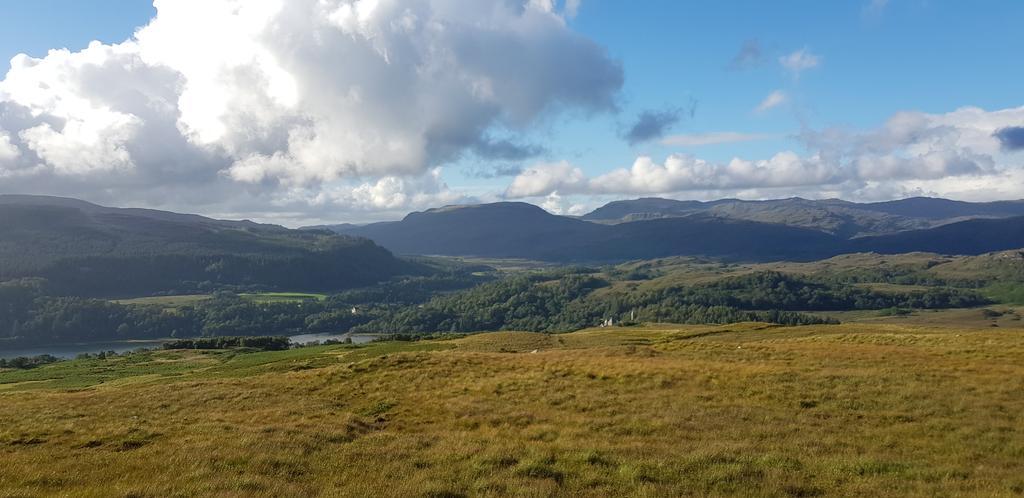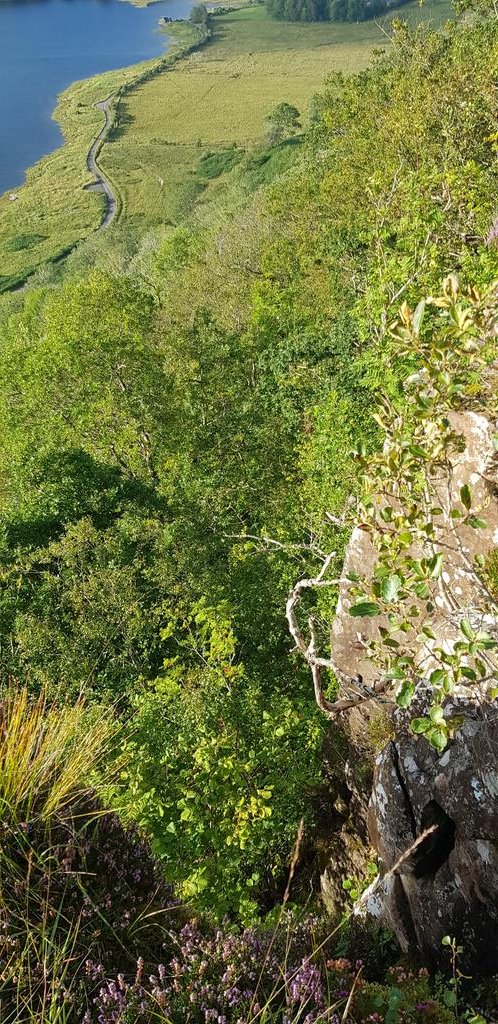Thread  https://abs.twimg.com/emoji/v2/... draggable="false" alt="👉" title="Rückhand Zeigefinger nach rechts" aria-label="Emoji: Rückhand Zeigefinger nach rechts"> The Atlantic rainforests of the west coast of Scotland are amongst the richest habitats for wildlife in Britain
https://abs.twimg.com/emoji/v2/... draggable="false" alt="👉" title="Rückhand Zeigefinger nach rechts" aria-label="Emoji: Rückhand Zeigefinger nach rechts"> The Atlantic rainforests of the west coast of Scotland are amongst the richest habitats for wildlife in Britain
They are internationally important for mosses, liverworts and lichens which thrive in the clean, moisture- laden Atlantic air. Even a small area of old woodland can support hundreds of species
This woodland at @Ardtornish is the one on the left of this picture. It& #39;s unusual as it is growing on volcanic basalt rock which has given rise to a less typical community of trees and other plants
This is an upland ash - rowan - dogs mercury woodland (W9 Fraxinus excelsior - Sorbus aucuparia - Mercurialis perennis woodland). & #39;Upland& #39; even though it is near sea-level thanks to the climate in this part of western Scotland. The photo below  https://abs.twimg.com/emoji/v2/... draggable="false" alt="👇" title="Rückhand Zeigefinger nach unten" aria-label="Emoji: Rückhand Zeigefinger nach unten"> shows dogs mercury
https://abs.twimg.com/emoji/v2/... draggable="false" alt="👇" title="Rückhand Zeigefinger nach unten" aria-label="Emoji: Rückhand Zeigefinger nach unten"> shows dogs mercury
This is an ancient woodland as can be seen by this huge old ash which has fallen in a storm. It& #39;s opened up a light- filled gap into which new trees are growing. This type of natural woodland succession is rare in the UK
The deadwood is also providing habitat for a range of lower plants, fungi and insects like wood boring beetles
The variations in light and dark created from the tree canopy changes also provide multiple niches for weird and wonderful lichens and bryophytes to thrive
Some trees are even reborn as gaps open up - like this incredible veteran rowan. These & #39;Phoenix trees& #39; send fresh sapling-like shoots up from what often seems like a dead stump or trunk
Many of these woodlands have old hazel coppices like this one  https://abs.twimg.com/emoji/v2/... draggable="false" alt="👇" title="Rückhand Zeigefinger nach unten" aria-label="Emoji: Rückhand Zeigefinger nach unten">, often growing with oak and birch when the soils beneath are derived from granite bedrock
https://abs.twimg.com/emoji/v2/... draggable="false" alt="👇" title="Rückhand Zeigefinger nach unten" aria-label="Emoji: Rückhand Zeigefinger nach unten">, often growing with oak and birch when the soils beneath are derived from granite bedrock
Such coppices hint of a long history of human use going back many centuries. Only the very steep gorges were left truly undisturbed and it& #39;s here the rarest liverwort and moss species are often found
These woodlands are now much better protected than they once were but are still threatened by overgrazing by deer, invasive Rhododendron ponticum and are highly fragmented and therefore particularly vulnerable to climate change
Several projects such as @coigachassynt are trying to reconnect these fragments into connected networks of woodlands - helping species move through the landscape and adapt to the changing climate
At @Ardtornish the goal is to expand these woodlands through a combination of planting and natural regeneration through lowering historically very high deer and sheep densities
And there are already signs that reduced grazing pressure from deer and sheep is helping. These saplings  https://abs.twimg.com/emoji/v2/... draggable="false" alt="👇" title="Rückhand Zeigefinger nach unten" aria-label="Emoji: Rückhand Zeigefinger nach unten"> of birch and rowan are establishing themselves on open wet heath on the woodland edge - they are the beginnings of a future ancient woodland
https://abs.twimg.com/emoji/v2/... draggable="false" alt="👇" title="Rückhand Zeigefinger nach unten" aria-label="Emoji: Rückhand Zeigefinger nach unten"> of birch and rowan are establishing themselves on open wet heath on the woodland edge - they are the beginnings of a future ancient woodland
In time the woodlands will start to reconnect and scattered trees will return to the open landscapes which will also contain lots of tree-sparse #peatlands. As at Corrour, much of the landscape will be an intimate mix of woodland and bog - open and closed
Ardtornish and @ScotWildlife in adjacent Rahoy Hills are putting in place a set of Ecosystem Health Indicators to monitor and drive ecological restoration in the decades to come. The EHIs will cover woods, peatlands, freshwater habitats, upland grasslands and key species
Like Corrour, this is a positive vision of landscape-scale ecological restoration. Too few landowners are yet to embrace this vision but more will surely soon follow the lead of @Ardtornish @CorrourEstate @CairngormsCo @coigachassynt @treesforlifeuk @WoodlandTrust and others

 Read on Twitter
Read on Twitter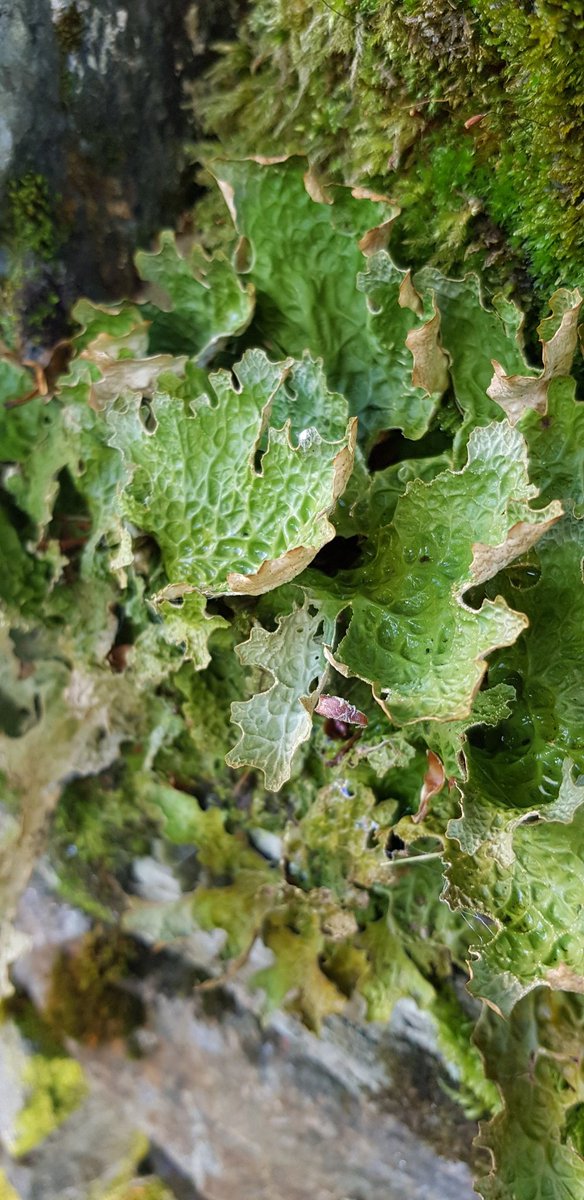
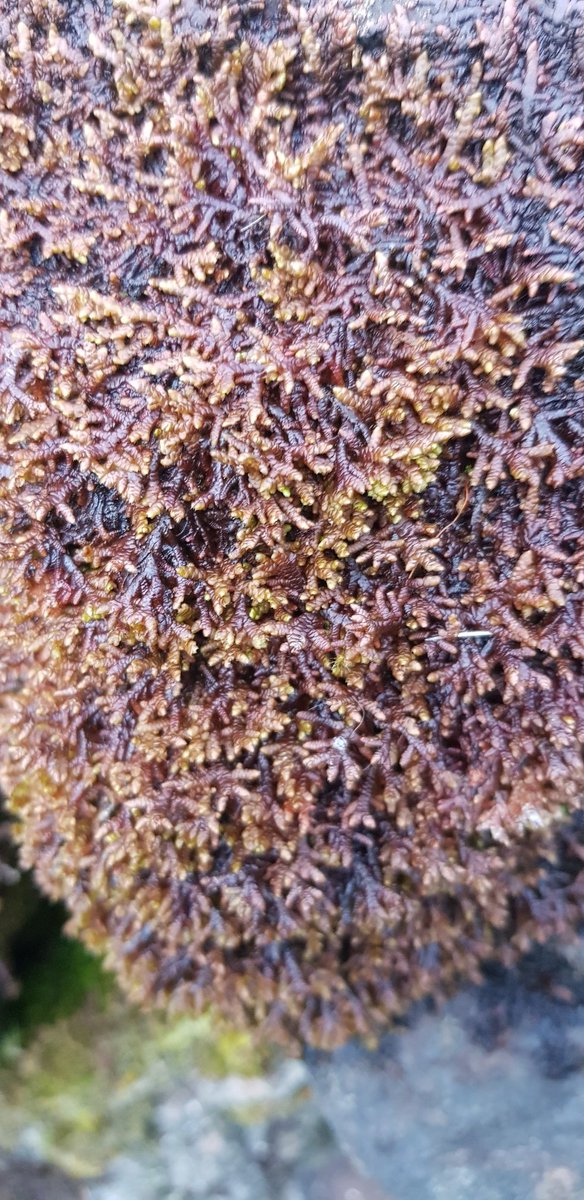
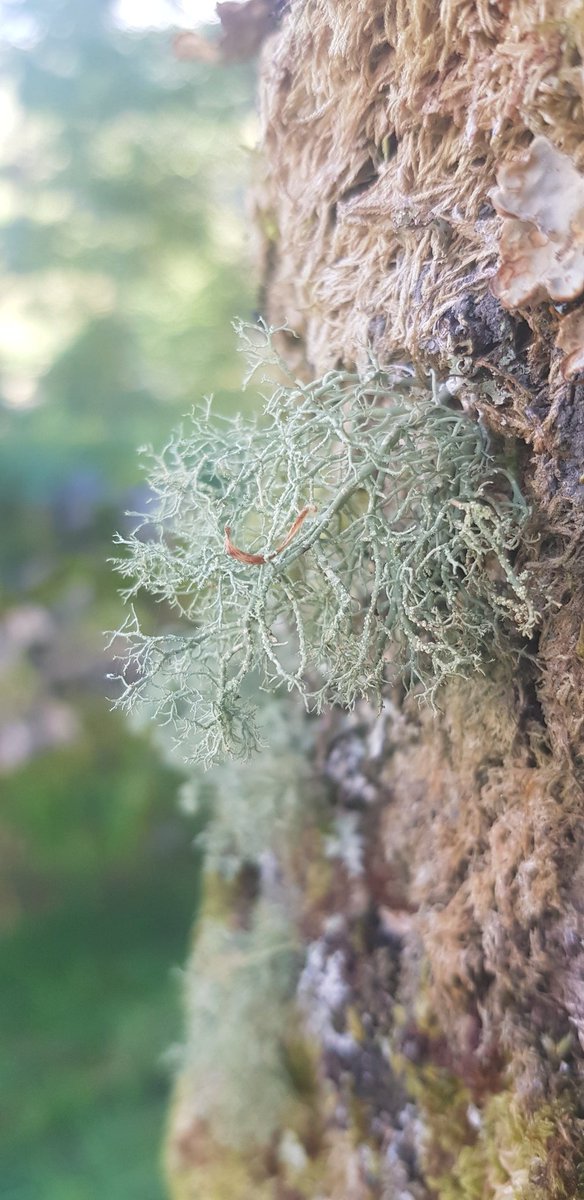

 shows dogs mercury" title="This is an upland ash - rowan - dogs mercury woodland (W9 Fraxinus excelsior - Sorbus aucuparia - Mercurialis perennis woodland). & #39;Upland& #39; even though it is near sea-level thanks to the climate in this part of western Scotland. The photo below https://abs.twimg.com/emoji/v2/... draggable="false" alt="👇" title="Rückhand Zeigefinger nach unten" aria-label="Emoji: Rückhand Zeigefinger nach unten"> shows dogs mercury" class="img-responsive" style="max-width:100%;"/>
shows dogs mercury" title="This is an upland ash - rowan - dogs mercury woodland (W9 Fraxinus excelsior - Sorbus aucuparia - Mercurialis perennis woodland). & #39;Upland& #39; even though it is near sea-level thanks to the climate in this part of western Scotland. The photo below https://abs.twimg.com/emoji/v2/... draggable="false" alt="👇" title="Rückhand Zeigefinger nach unten" aria-label="Emoji: Rückhand Zeigefinger nach unten"> shows dogs mercury" class="img-responsive" style="max-width:100%;"/>

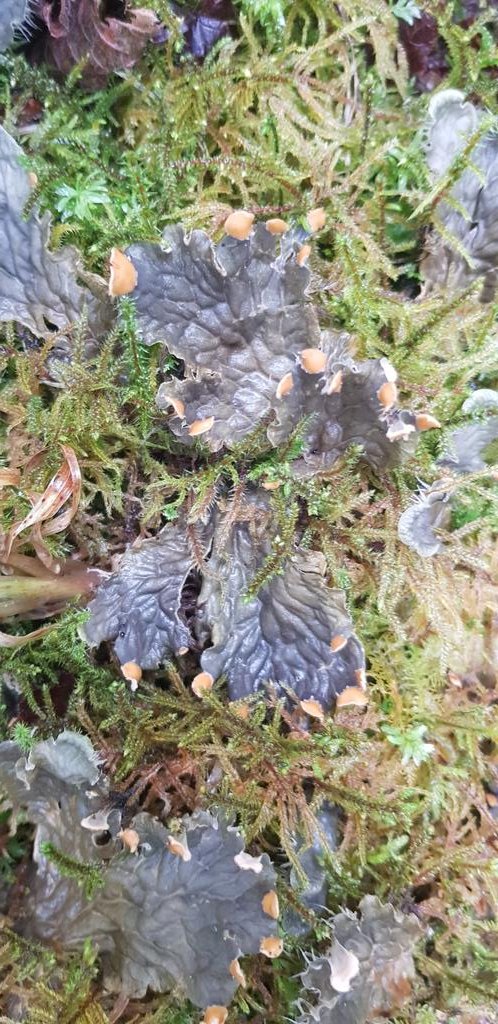

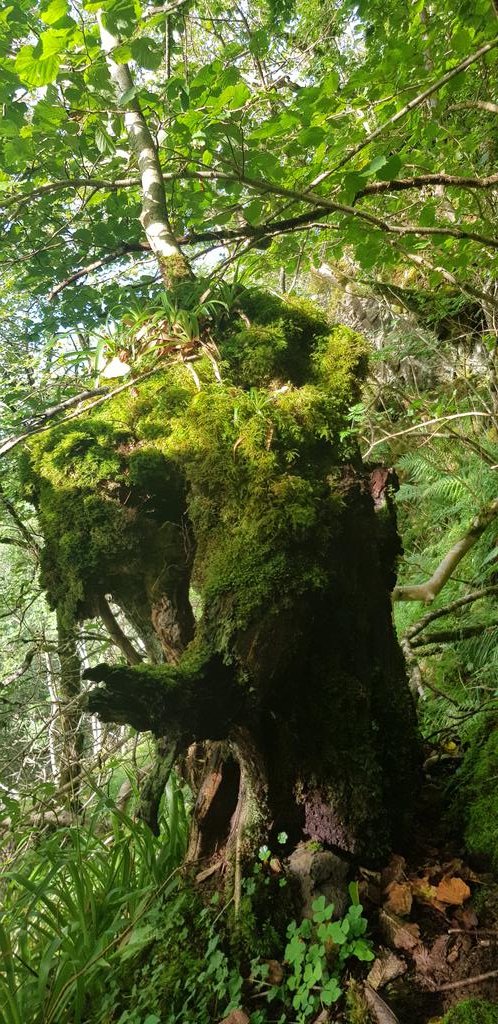
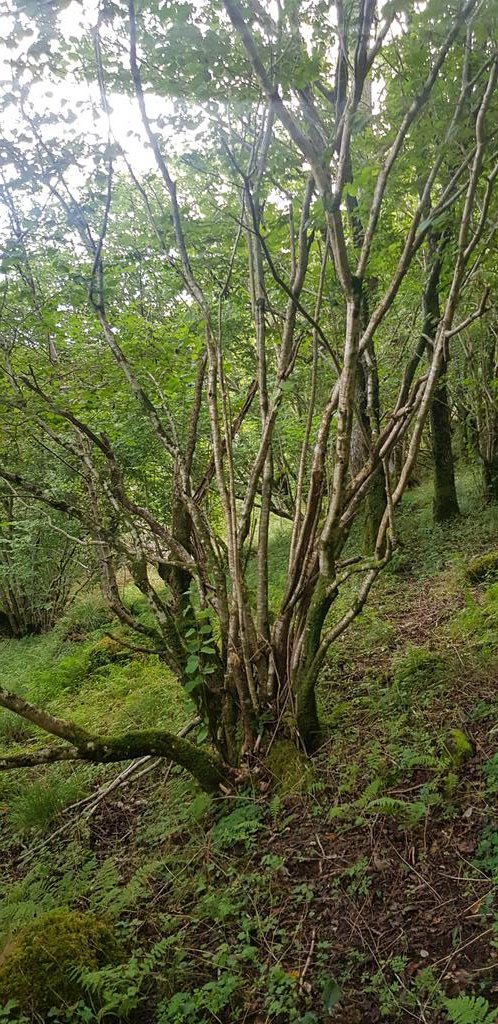 , often growing with oak and birch when the soils beneath are derived from granite bedrock" title="Many of these woodlands have old hazel coppices like this one https://abs.twimg.com/emoji/v2/... draggable="false" alt="👇" title="Rückhand Zeigefinger nach unten" aria-label="Emoji: Rückhand Zeigefinger nach unten">, often growing with oak and birch when the soils beneath are derived from granite bedrock" class="img-responsive" style="max-width:100%;"/>
, often growing with oak and birch when the soils beneath are derived from granite bedrock" title="Many of these woodlands have old hazel coppices like this one https://abs.twimg.com/emoji/v2/... draggable="false" alt="👇" title="Rückhand Zeigefinger nach unten" aria-label="Emoji: Rückhand Zeigefinger nach unten">, often growing with oak and birch when the soils beneath are derived from granite bedrock" class="img-responsive" style="max-width:100%;"/>

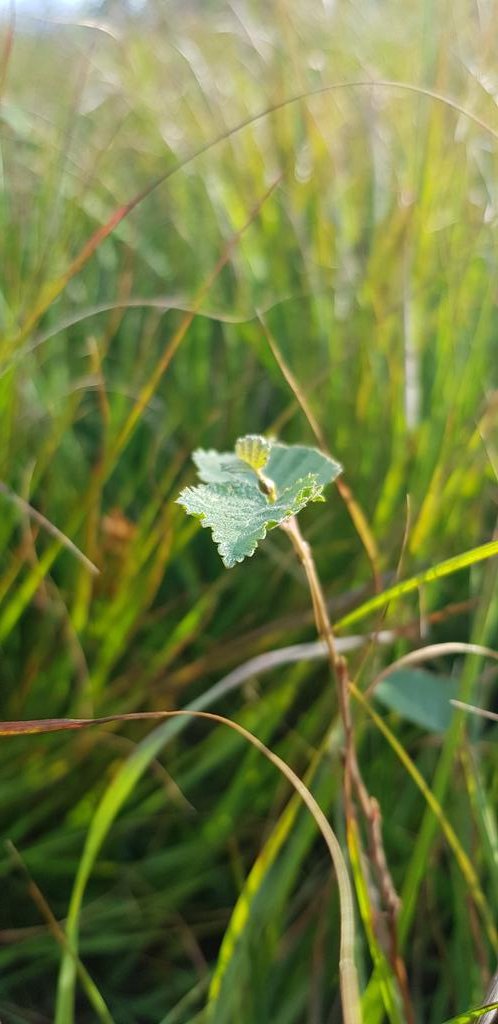 of birch and rowan are establishing themselves on open wet heath on the woodland edge - they are the beginnings of a future ancient woodland" title="And there are already signs that reduced grazing pressure from deer and sheep is helping. These saplings https://abs.twimg.com/emoji/v2/... draggable="false" alt="👇" title="Rückhand Zeigefinger nach unten" aria-label="Emoji: Rückhand Zeigefinger nach unten"> of birch and rowan are establishing themselves on open wet heath on the woodland edge - they are the beginnings of a future ancient woodland">
of birch and rowan are establishing themselves on open wet heath on the woodland edge - they are the beginnings of a future ancient woodland" title="And there are already signs that reduced grazing pressure from deer and sheep is helping. These saplings https://abs.twimg.com/emoji/v2/... draggable="false" alt="👇" title="Rückhand Zeigefinger nach unten" aria-label="Emoji: Rückhand Zeigefinger nach unten"> of birch and rowan are establishing themselves on open wet heath on the woodland edge - they are the beginnings of a future ancient woodland">
 of birch and rowan are establishing themselves on open wet heath on the woodland edge - they are the beginnings of a future ancient woodland" title="And there are already signs that reduced grazing pressure from deer and sheep is helping. These saplings https://abs.twimg.com/emoji/v2/... draggable="false" alt="👇" title="Rückhand Zeigefinger nach unten" aria-label="Emoji: Rückhand Zeigefinger nach unten"> of birch and rowan are establishing themselves on open wet heath on the woodland edge - they are the beginnings of a future ancient woodland">
of birch and rowan are establishing themselves on open wet heath on the woodland edge - they are the beginnings of a future ancient woodland" title="And there are already signs that reduced grazing pressure from deer and sheep is helping. These saplings https://abs.twimg.com/emoji/v2/... draggable="false" alt="👇" title="Rückhand Zeigefinger nach unten" aria-label="Emoji: Rückhand Zeigefinger nach unten"> of birch and rowan are establishing themselves on open wet heath on the woodland edge - they are the beginnings of a future ancient woodland">
